Eggs are a delicious and frugal protein. Learn how easy it is to make simple hard cooked eggs perfect every time with these stovetop, instant pot, or air fryer directions.
Once you’ve mastered how to cook them, be sure to check out our Recipes to Use Hard Boiled Eggs!
Want to save this post?
Enter your email below and get it sent straight to your inbox. Plus, I’ll send you budget recipes and money-saving tips every week!
One of our favorite ways to enjoy eggs is hard cooked. The whole family loves them!
I love to serve hard cooked eggs on salads and in sandwiches, while the rest of the family gobbles them down with a bit of salt and pepper. I regularly cook a dozen each week to have on hand for quick fix meals and snacks.
And they’re perfect to include in an at-home salad bar.
What are hard cooked eggs?
Hard cooked eggs are eggs cooked inside the shell. The whites and yolks both become firm, so that once peeled, they hold their shape and can be cut or sliced or simply eaten out of hand.
They are the building blocks of egg salad, deviled eggs, and Scotch eggs.
Contrary to popular belief, the best eggs are hard cooked, not hard boiled. Boiling eggs or even leaving them in the water too long will make the whites rubbery and the yolks green. They’re not bad for you. Just not as pretty as the ones pictured above.
And ever wonder why some eggs peel really easily while others fight to keep their shell?
I’m not an egg-ologist, nor do I play one on TV, but my cooking magazine reading has told me that the older the egg, the more oxygen inside it, the easier it will release the shell. Thus, the easier it will be to peel.
For some reason, cooking eggs in the instant pot overrides the need for older eggs. They peel beautifully every time.
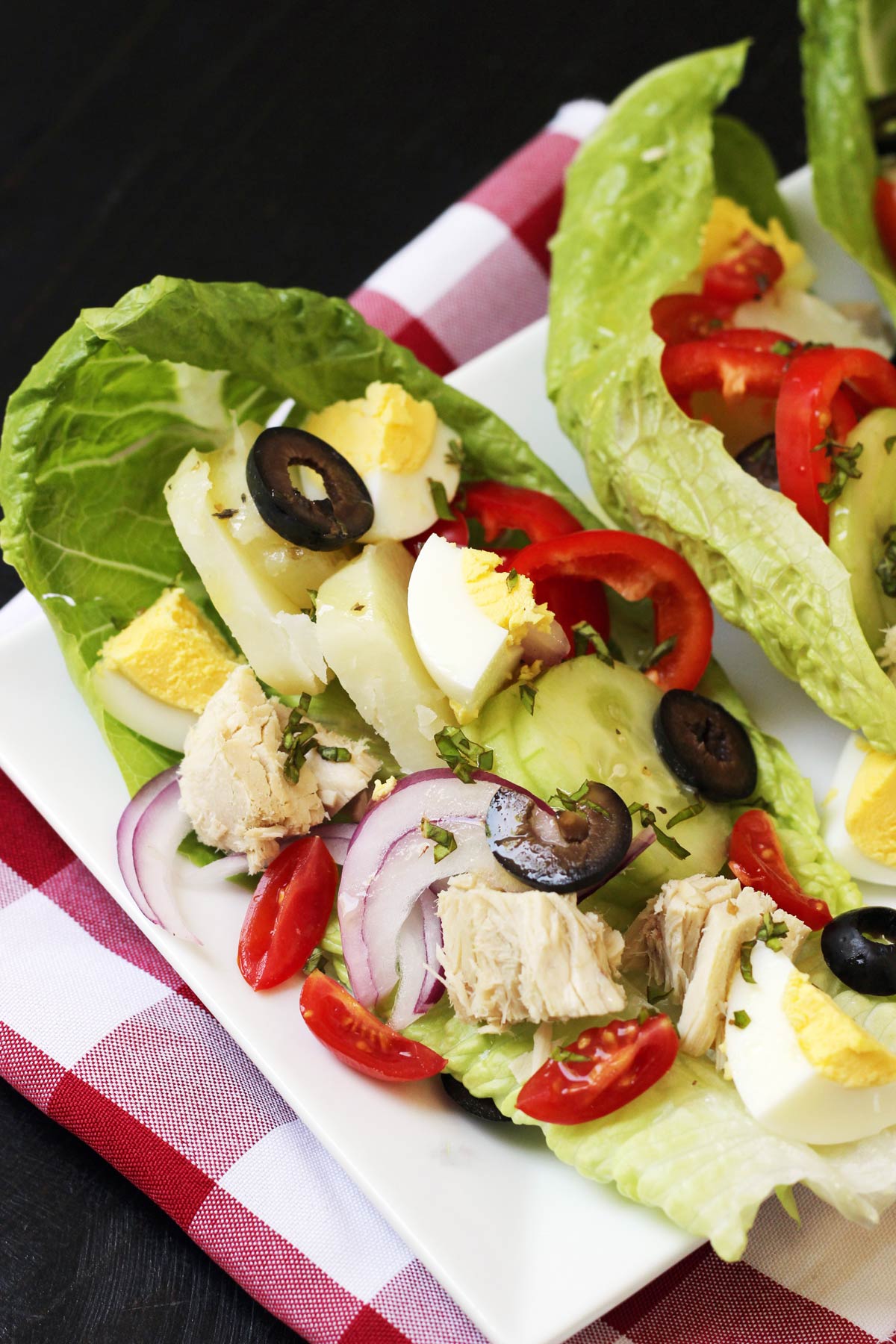
Eggs are such a frugal option to rely on in the kitchen, that I regularly keep at least four dozen on hand, but I’ll buy more at one time if I see them less than a dime an egg.
Eggs remain “good” often past their sell by date, so if you use a lot of eggs and have the room to store them in the refrigerator, they are a good stock-up option.
Got extras? Be sure to check out our recipes for what to make with eggs.
How do you know when an egg is bad?
One rule of thumb for testing the goodness of an egg is the “float test”. Place the uncooked egg (in its shell) in a bowl of cool water.
- If the egg lies on its side, it is very fresh.
- If it stands up, some oxygen has infiltrated the shell’s barrier. It is still good for baking and will make easy-peel hard boiled eggs.
- If it floats, the egg is bad and should be discarded.
Years ago, Julia Child published a multi-step recipe for cooking the perfect hard cooked egg. It was multiple steps more than either you or I want to take.
Thankfully, a good hard cooked egg is not hard to come by.
Three Different Ways to Hard Cook Eggs
You can cook eggs in a pot on the stove, in an electric pressure cooker, or in an air fryer. Remember that when using appliances like the pressure cooker or air fryer, there will be differences between models and manufacturers.
All that to say, your mileage may vary, depending on how cooked you like your eggs and which method you choose.
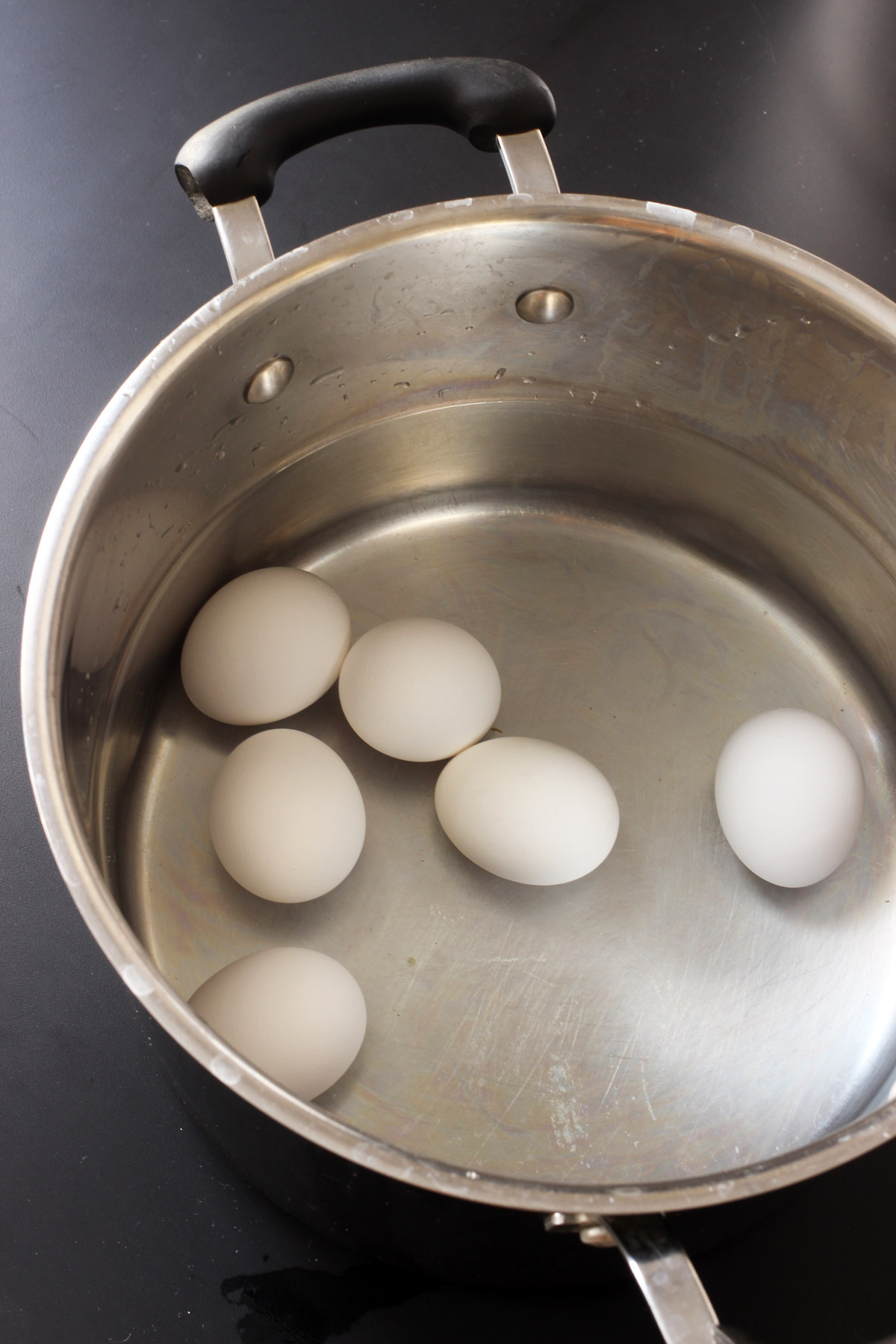
To cook eggs on the stovetop:
- Place eggs in pot large enough to hold them in a single layer. Add cold water to cover eggs by at least 1 inch. Heat over high heat just to boiling. Turn off the heat and cover the pot.
- Remove the pot from the burner and let the eggs stand in the hot water about 15 minutes for Large eggs (12 minutes for Medium eggs; 18 for Extra Large). Let them sit for less time (about 6 minutes) if you’d like soft-boiled eggs.
- Plunge the eggs immediately into a bowl of ice water. This stops the cooking process and helps prevent the yolks from turning green.
- Peel and eat, or store unpeeled in the refrigerator for up to 1 week.
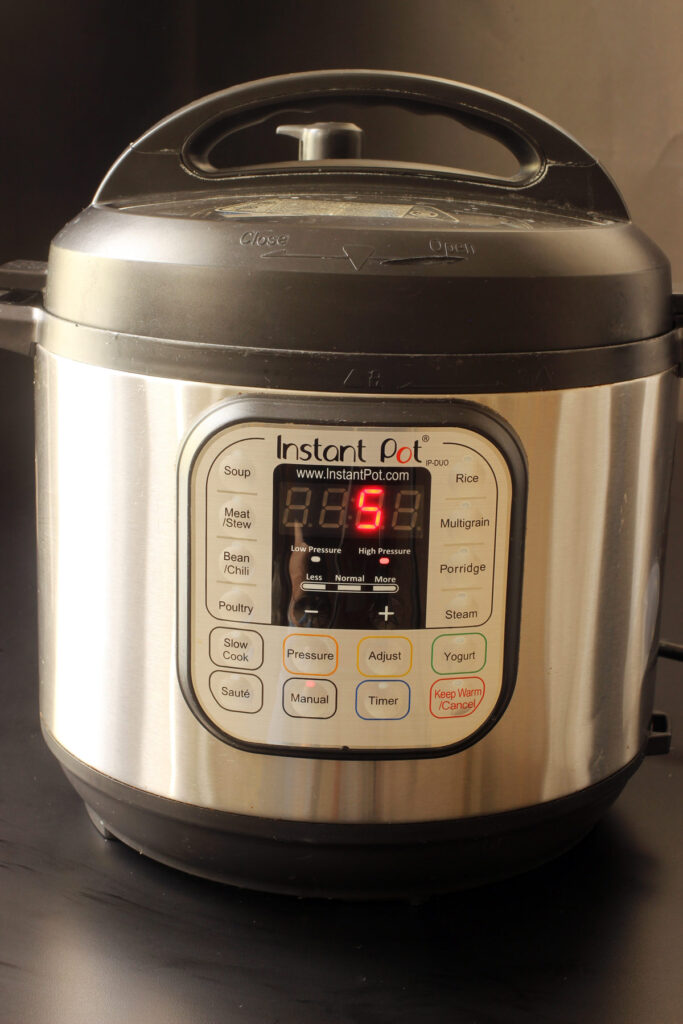
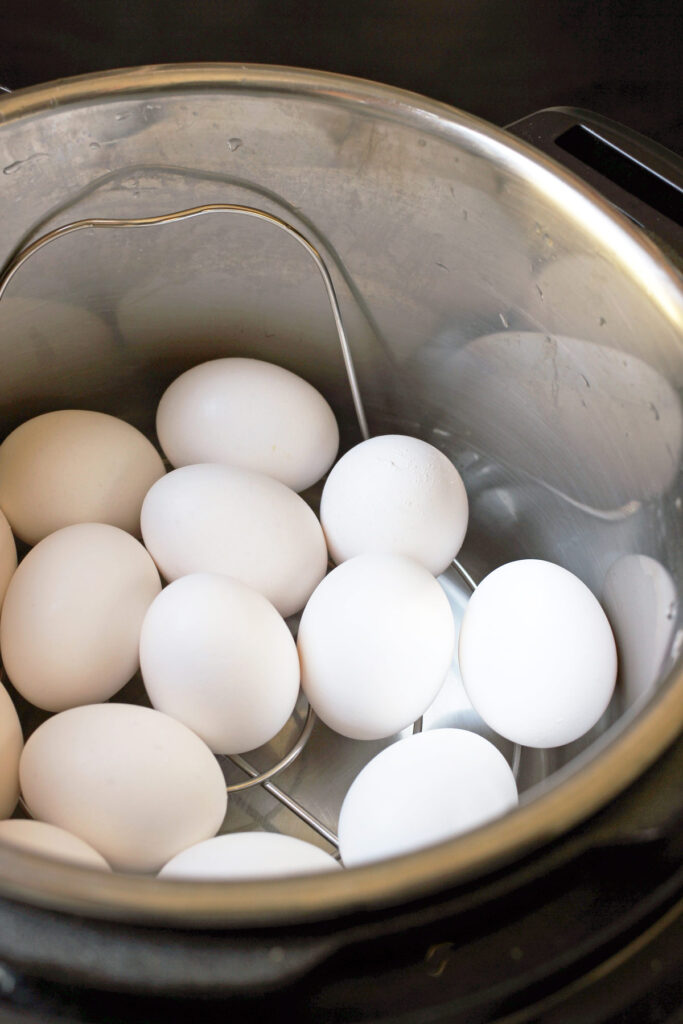
To cook eggs in the instant pot:
If you have an electric pressure cooker you’ve never used, eggs are a good thing to get started with! Not only does it cook them perfectly, but it also makes them super easy to peel. No matter how fresh the eggs are.
- Place a rack or basket in the pot of the electric pressure cooker. Place the eggs in a single later. Add 1 cup water to the pot.
- Secure the lid and close the pressure valve. Turn on the machine to manual and set for 4 to 6 minutes, depending on how done you like your eggs. I find the longer cooking time to be pretty perfect with done yolks.
- When the timer rings, release the pressure immediately and plunge the eggs into an ice bath.
- Peel and eat, or store unpeeled in the refrigerator for up to 1 week.
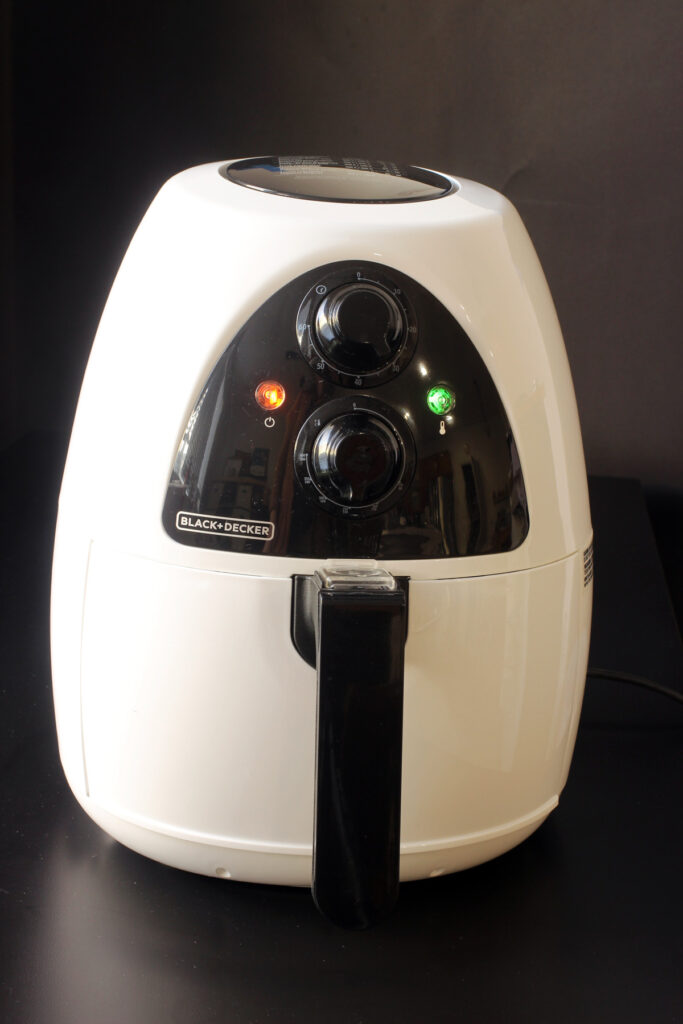
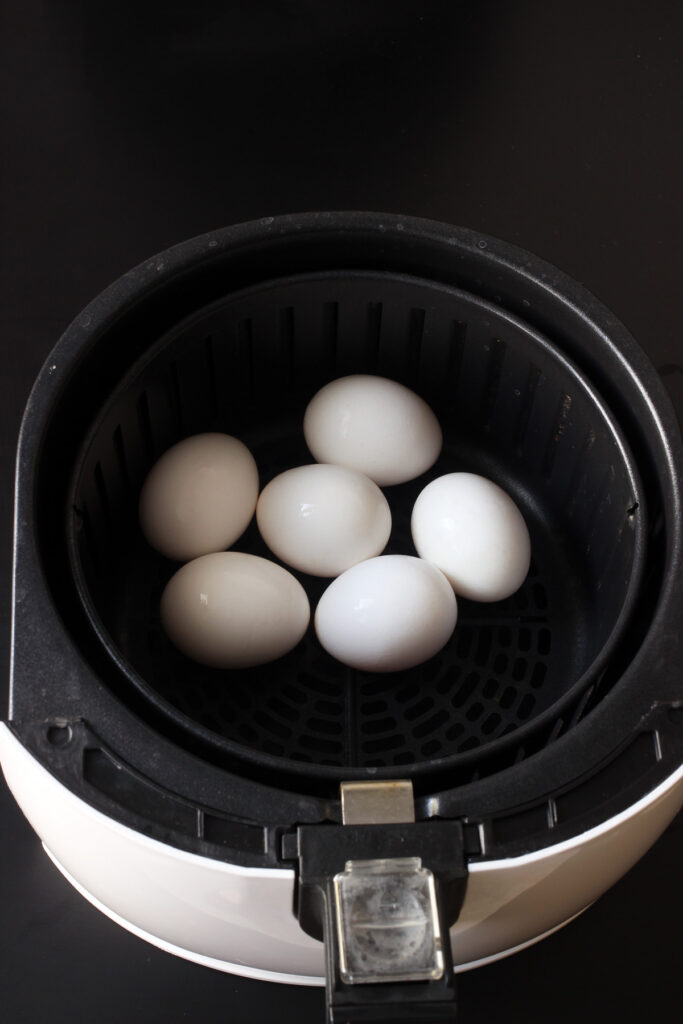
To cook eggs in the air fryer:
An air fryer is another one of those cool, but what-do-I-do-with-it appliances. My son loves cooking eggs in them—no need to boil water, but you still need the ice bath.
Note that the shells of eggs cooked in the air fryer may develop spots on the outside of the shell. This is harmless.
- Preheat the air fryer to 250 degrees.
- Place the eggs in a single layer in the basket. Insert the basket.
- Cook for 12 to 15 minutes, depending on how done you like your eggs. My son does 7 to 8 minutes for soft-boiled.
- When the time is up, remove the eggs from the basket and plunge them into an ice bath.
- Peel and eat, or store unpeeled in the refrigerator for up to 1 week.
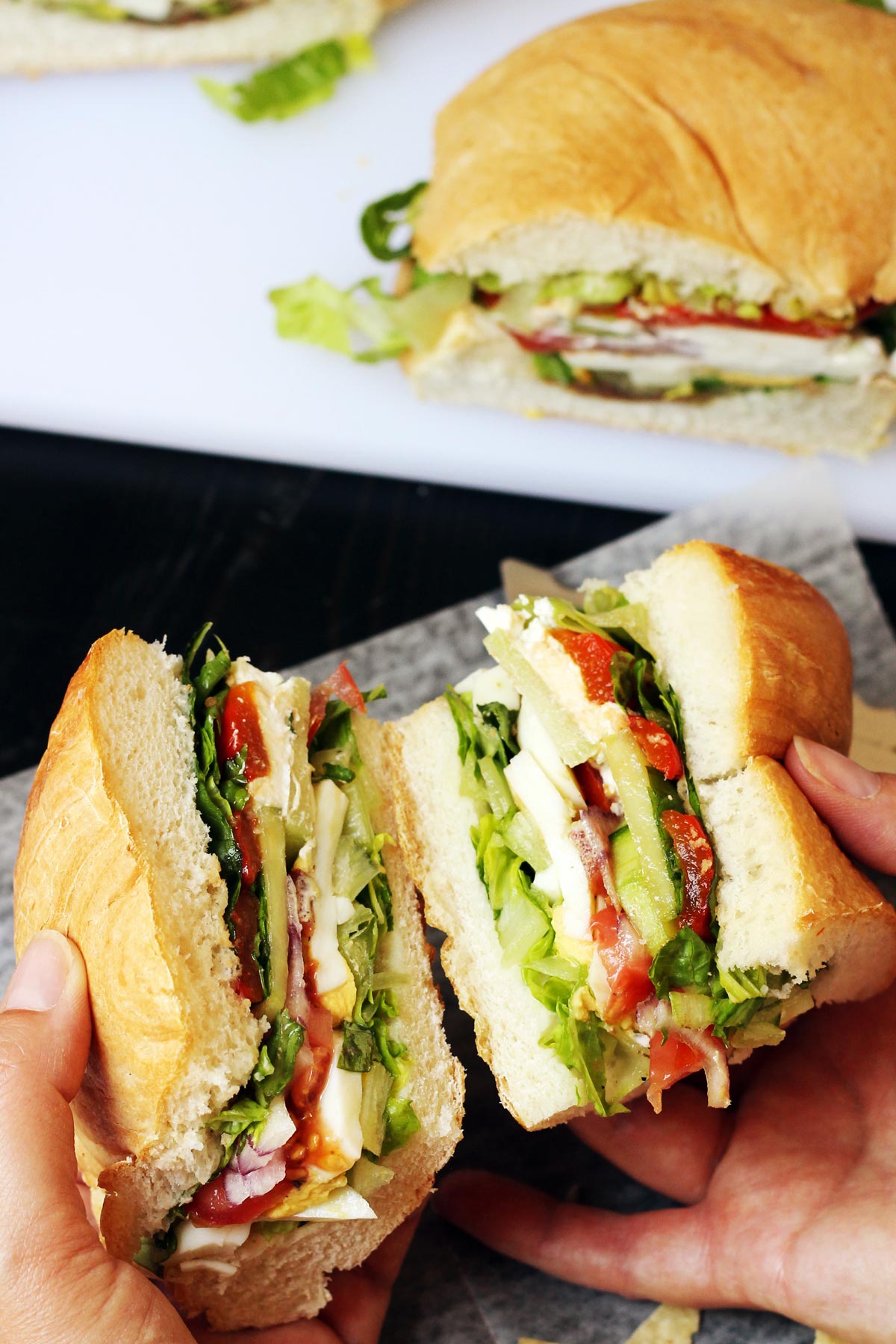
Storage
Hard cooked eggs are good refrigerated for up to 1 week.
Do not let eggs sit out at room temperature for longer than 2 hours, including the time that you might spend dying them at Easter. Return them to the fridge as soon as possible.
Note: hard cooked eggs are not appropriate for Easter Egg Hunts. Try this type of food-safe egg hunt instead.
Is it cheaper to cook your own or buy them already cooked?
Now, in modern times, you can buy your eggs already cooked. Almost every major grocery store carries their own brand or a name brand of hard boiled, ready-to-eat eggs. I’ve heard that they are practically perfect in every way.
Except for cost.
At my local Ralphs, they range from $0.67 to $1.00 per egg, depending on the brand and size of package.
Conversely, buying eggs at the same store costs about 20 cents each—when not shopping the sales. While you will spend some money in energy and storage costs, cooking your own eggs is dramatically cheaper than buying them already cooked.
I admit that while traveling or when you’re at a loss for kitchen access or power, buying them precooked is probably a great idea, but the rest of the time, I recommend cooking your own.

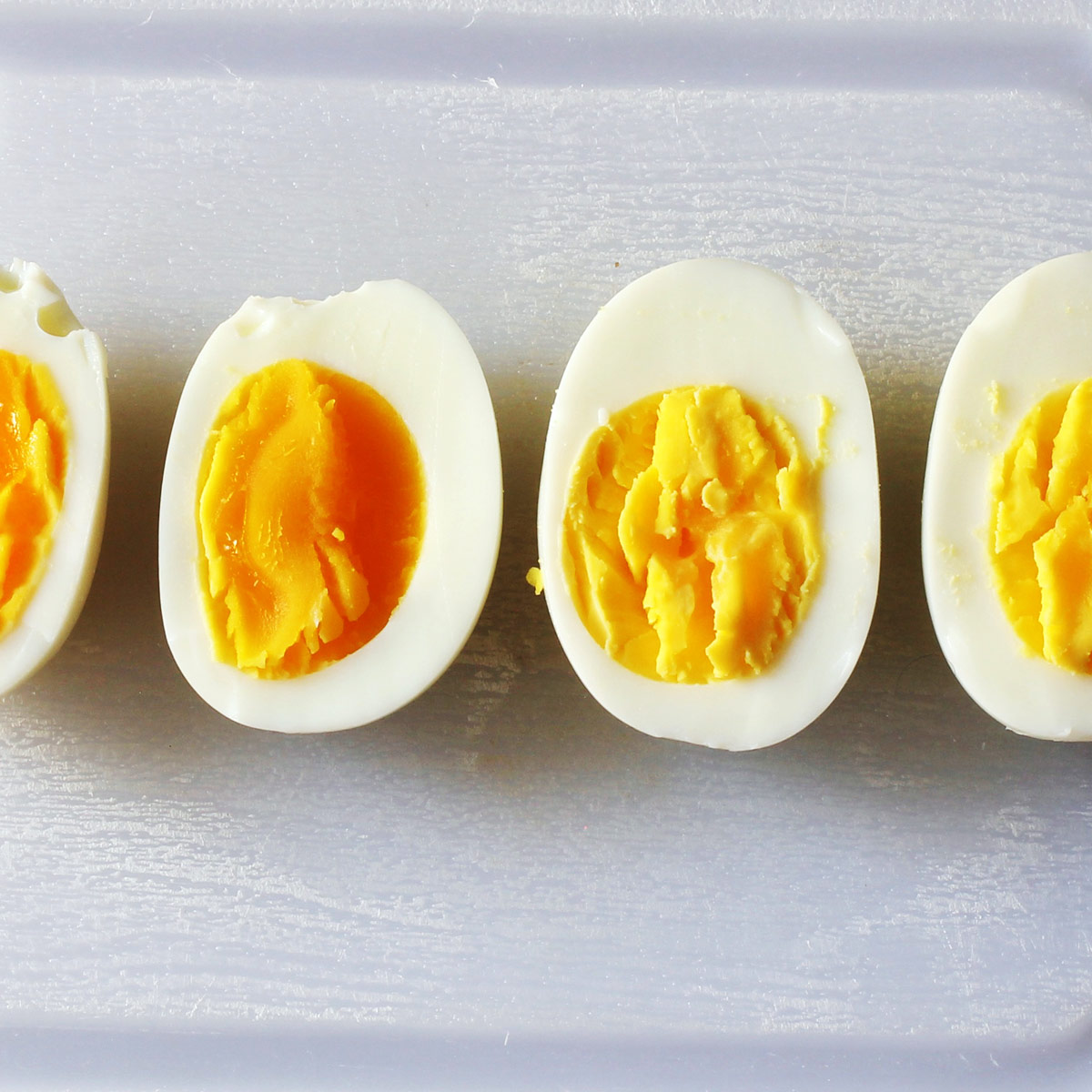
How to Make Simple Hard Cooked Eggs
Equipment
- Electric pressure cooker
- heavy stockpot
- air fryer
Ingredients
- 12 egg
- water
- 4 cup ice cubes
Instructions
To cook in a pot on the stove:
- Place eggs in pot large enough to hold them in a single layer. Add cold water to cover eggs by at least 1 inch. Heat over high heat just to boiling. Turn off the heat and cover the pot.
- Remove the pot from the burner and let the eggs stand in the hot water about 15 minutes for Large eggs (12 minutes for Medium eggs; 18 for Extra Large). Let them sit for less time (about 6 minutes) if you’d like soft-boiled eggs.
To cook in an electic pressure cooker:
- Place the rack inside the pot of the electric pressure cooker. Place the eggs on the rack. Add the water.
- Secure the lid and turn on the pressure valve. Turn on the machine and press the manual button. Set the time to 5 minutes.
- Meanwhile place the ice in a large bowl and add water to create an ice water bath.
- When the machine beeps, release the pressure immediately.
To cook in an air fryer:
- Preheat the air fryer to 250 degrees.
- Place the eggs in a single layer in the basket. Insert the basket into the fryer.
- Cook for 12 to 15 minutes, depending on how done you like your eggs. Try 7 to 8 minutes for soft-boiled.
Once the eggs are cooked:
- Remove the eggs from the pot or basket and place them in the bowl of ice water. Once the eggs are cooled, use them in recipes. Refrigerate for up to a week.
Notes
Nutrition
Recipes that Use Hard-Cooked Eggs
Wondering what to do with hard-cooked eggs? Here's a dozen of our favorite recipes.
Egg Plus Salad Sandwiches
Go beyond the egg salad sandwich with this egg PLUS salad sandwich. Hard cooked eggs, vinaigrette, and abundant veggies make a delicious and economical meal for Sandwich Night.
Ham and Egg Salad
Ham and eggs are a natural pair, especially in a sandwich-style salad featuring green garlic, spicy brown mustard, and crunchy celery.
Nicoise Salad Wraps
Take an old French classic and tweak it with these Nicoise Salad Wraps. Filled with tuna, egg, and vegetables but serve in a wrap, the traditional salad feels new again.
Picnic Sandwich Recipe
Enjoy eating in the great outdoors with this easy, make-ahead picnic sandwich. Meatless and packed with lots of fresh veggies and protein-rich hard-cooked eggs, it’ll do your summer good.
Salade Nicoise Recipe
Salade Nicoise is one of the traditional French salads, composed rather than tossed, and featuring fresh vegetables, cooked egg, tiny salty black olives, and tuna.
Chef's Salad with a Garlicky Anchovy Vinaigrette
A typical chef’s salad boasts hard-boiled eggs, cucumbers, tomatoes, cheese, and meat on a bed of dressed greens. This garlicky anchovy vinaigrette adds some punch to the mix.
Egg Salad BLT Sandwich
Can’t decide between an egg salad sandwich and a BLT? You don’t have to! This Egg Salad BLT sandwich combines them both into one fantastic meal.
Pan Bagnat - Delicious & Budget-friendly
Enjoy the flavors of the Mediterranean and low cost ingredients in the classic Pan Bagnat. Simple to make, it’s a perfect tuna sandwich.
Protein Box (aka DIY Bistro Box)
Make lunch time super simple and totally delicious with this Protein Box, aka DIY Bistro Box. Packed with hard-cooked eggs, cheese and crackers, and nut butter dippers, it won’t break the bank.
Turkey and Ham Cobb Salad
A Cobb Salad is full of flavor so it never need be boring. This one with egg, ham, and turkey gets dressed up with tomato, bacon, and leeks.
Ham and Cheese Salad
Ham and Gruyere cheese add rich flavor to this hearty salad that evokes tastes of France. This recipe takes less than 30 minutes to prepare and tastes great!
This post was originally published on March 19, 2010. It has been updated for content and clarity.



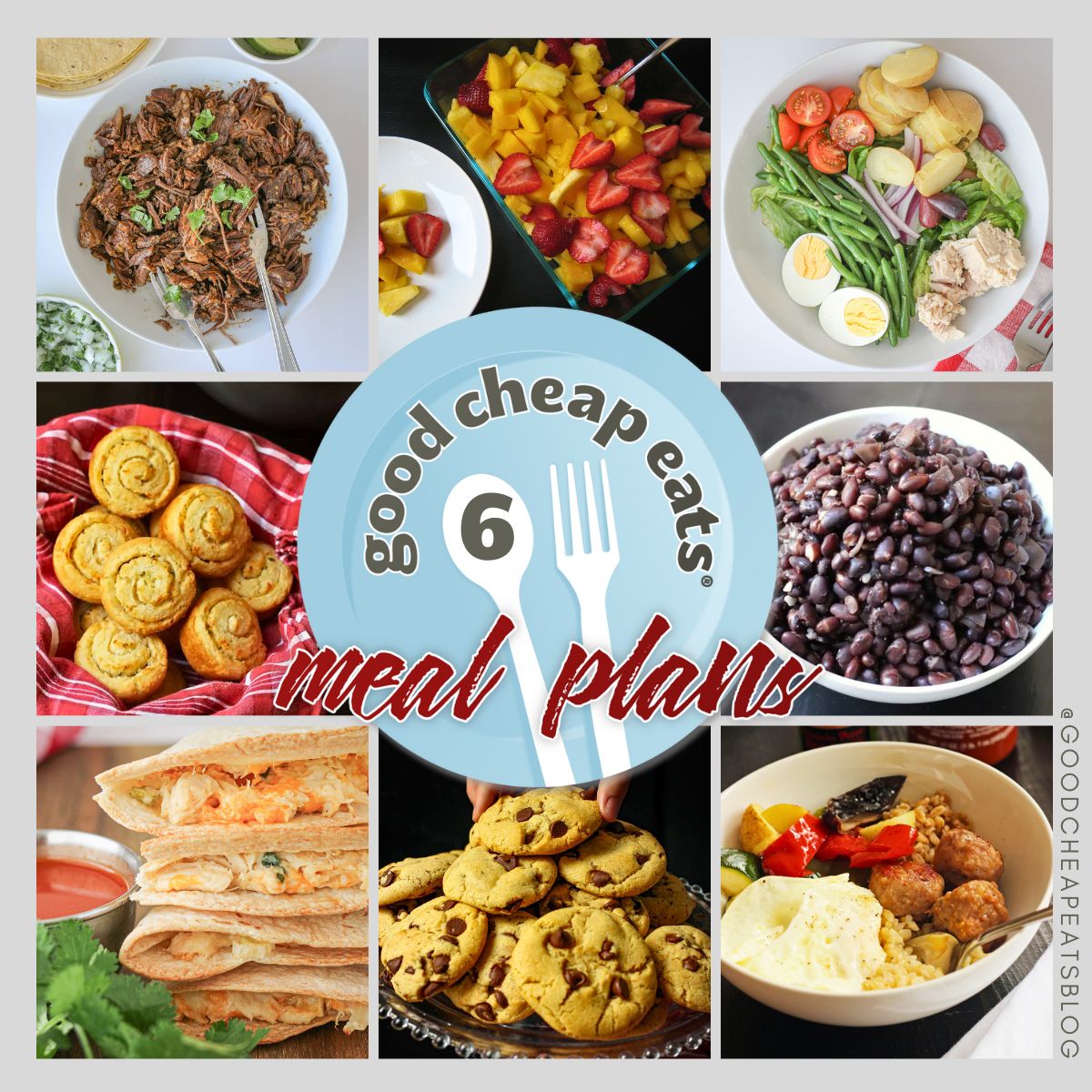
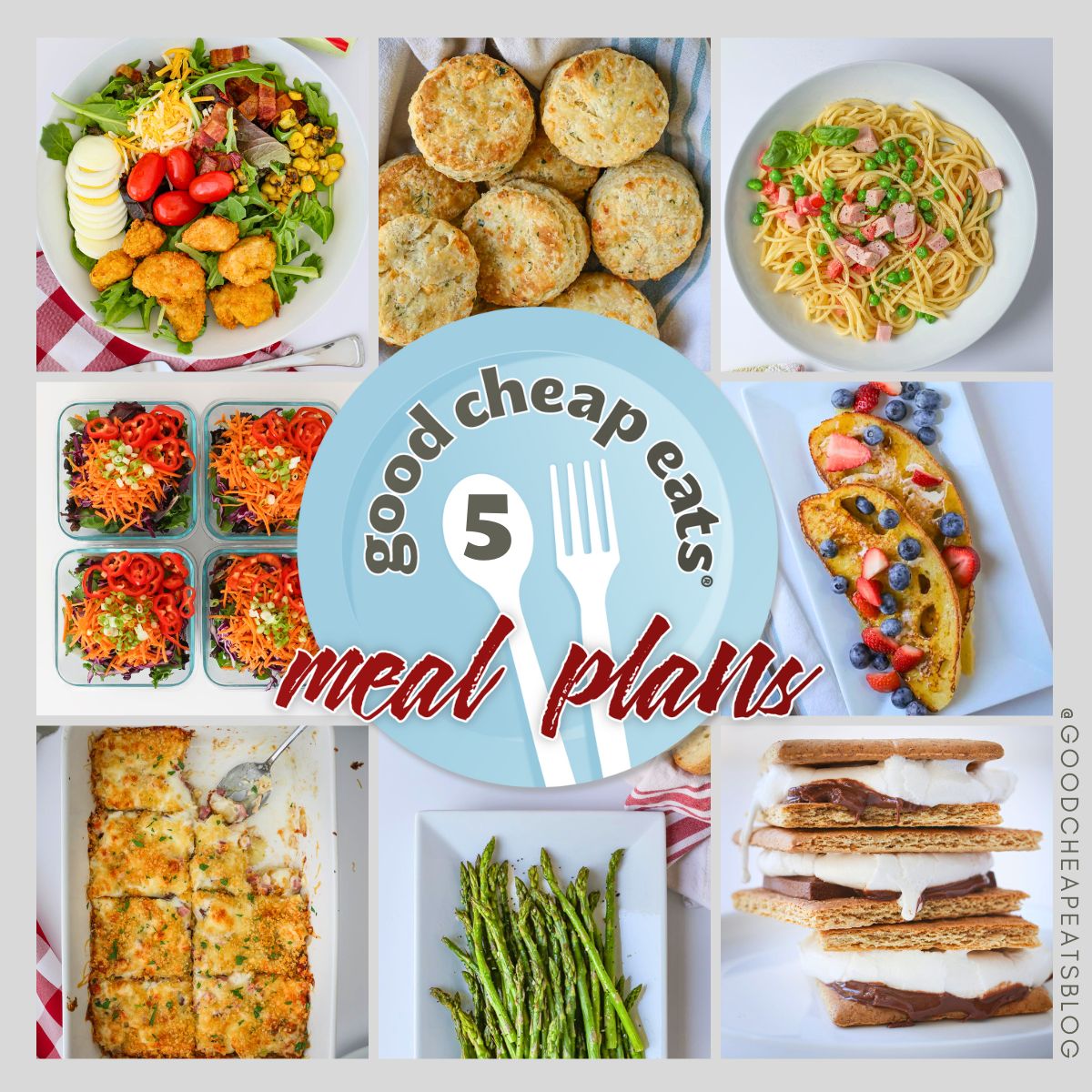
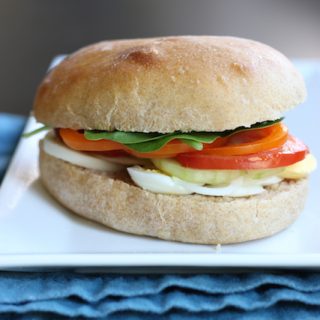

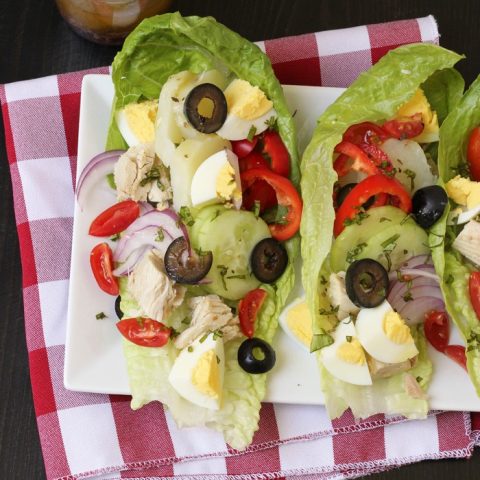
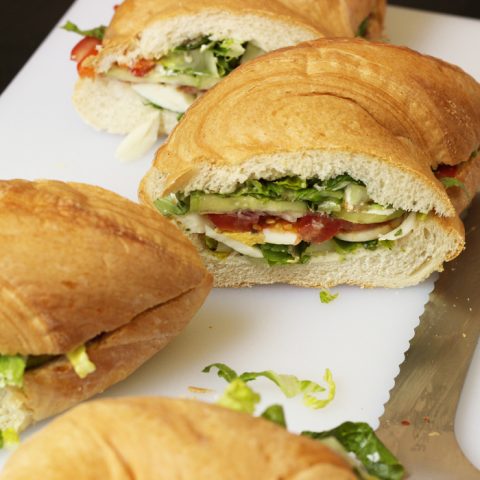
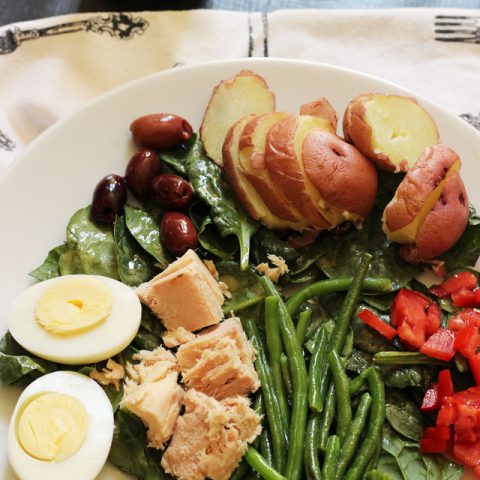
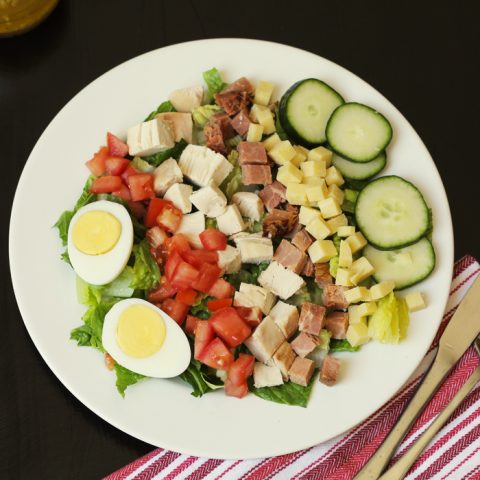
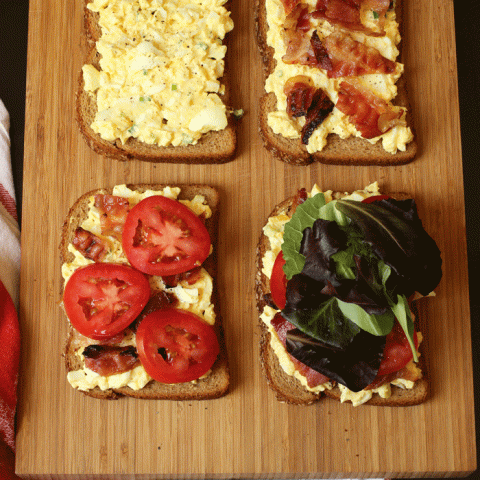
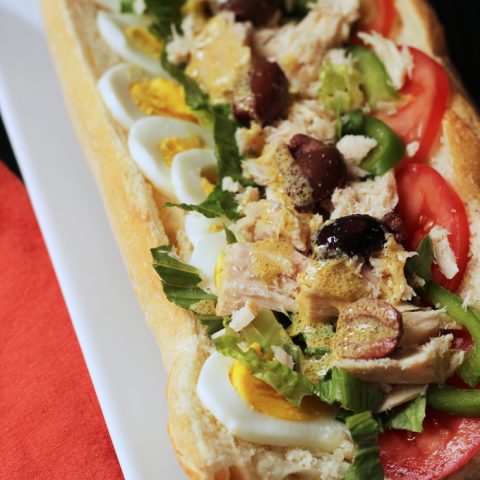
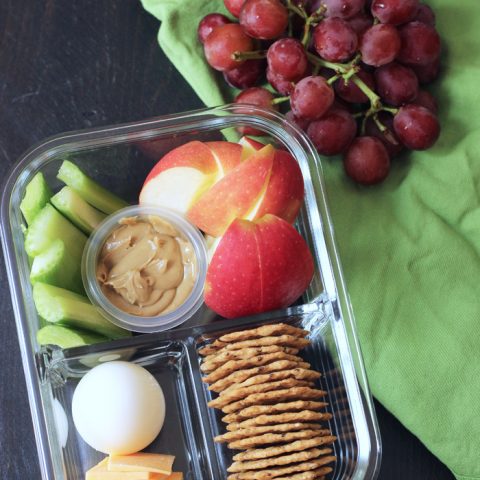
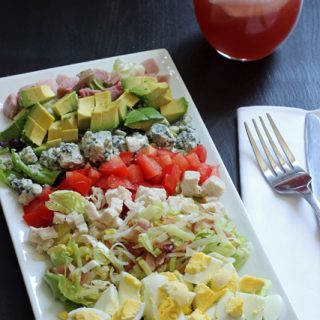
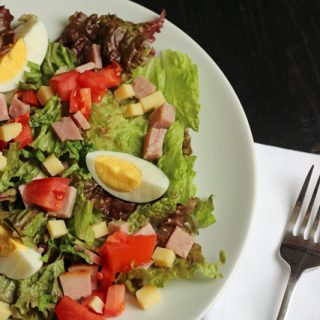

Dina S
What makes you store them with the shell? As long as they are eaten within a week, is there any reason not to peel them as soon as they are done cooking? I usually run mine under cold water and then peel them all. I keep them in containers in my fridge and I usually go through 18-36 per week, just for munching for a family of six.
Jessica Fisher
Interesting question! I would think that’s fine to peel them, since they sell them that way at the store. I just prefer not to.
Eva Lynn
As far as peeling — it helps to add a pinch of salt to the water. I’ve heard a bit of baking soda can also help, but haven’t tried that. Adding one more step to the process also seems to help with mine: prepare a bowl of ice water, and once the eggs are done, dip each one into the ice water for a few seconds, then take it out right away. It stops the cooking process and also seems to help pull the egg away from the shell a bit. Hope that improves the peeling process for someone aside from me!
claire
we eat a lot of eggs in this family. Scrambled, hard cooked you name it. Love egg salad. love eggs in my salad. the only thing I dislike about eggs is the struggle with the shells. Come off already, will ya!
Shonda
I will try this way. I have had tough luck making good hard boiled eggs and I love and need them since we get about 6 a day from our chickens.
Jessica
@Shonda, the older the egg, the better. Fresh eggs tend to be hard to peel.
You could also make some egg casseroles for freezing.
Stacy
I’ve done it this way a few times, but I had a lot of trouble peeling them with older and younger eggs. I’ll test them next time though and try it again. I love them too, and so do my husband and son. My 4YO loves egg salad, which I find strange since I hated it so much as a kid. I like it now though. 🙂
Raquel
I’ve always fully boiled my eggs. will try this. thanks.